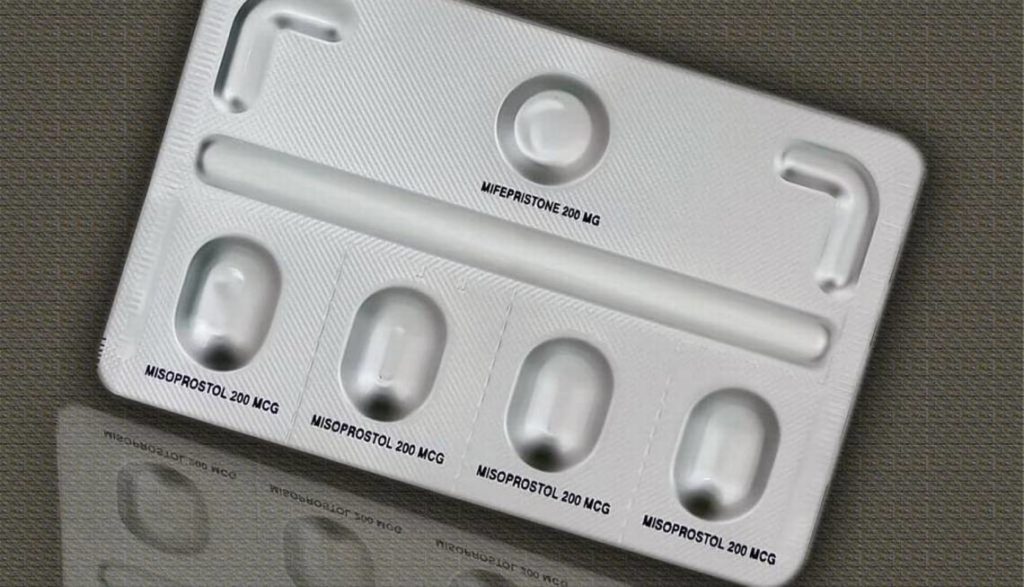Medical Abortion : Overview
A medical abortion is an abortion that is completed using a combination of medicines either taken orally or through the vagina. It works by stopping the growth of the pregnancy and then causing the lining of the uterus to shed. This type of abortion can be done as soon as pregnancy begins up until around nine weeks of pregnancy.
It involves taking two medications – mifepristone and misoprostol.
Mifepristone works by blocking the hormone progesterone. The pregnancy cannot continue to grow in the uterus, without progesterone.
Misoprostol causes cramping and bleeding to empty the uterus.
Medical Abortion : Procedure
Medical abortion involves taking medication orally or through the vagina. It does not require anesthesia or surgery. It works by using a combination of two drugs that, when used together, induce an abortion. Mifepristone works by blocking progesterone. Without progesterone, the uterine lining will thin, and the embryo will not stay attached. When misoprostol is taken, it causes the uterus to contract, bleed and expel the embryo.
The most common medical abortions are:
- Mifepristone and misoprostol (oral): You will take mifepristone with your healthcare provider or once you are home. Then, you will take misoprostol 24 to 48 hours later at home.
- Mifepristone (oral) and misoprostol (vaginal, buccal or sublingual): This is the same medication, except the misoprostol is taken through the vagina or dissolved in the cheek or under the tongue. It is also taken within 24 to 48 hours of the first medication.
The most severe side effects from a medical abortion start shortly after taking the second pill. After both doses of medication have been taken you can expect the following to occur:
- Bleeding and cramping that starts between one and four hours after taking the second pill.
- Heavy bleeding with blood clots for the next several hours.
- Heavy cramping for several hours.
- A low fever or chills that last about a day after taking the second pill. Others report feeling tired, nauseas and dizzy, and having diarrhea.
A follow-up appointment will be scheduled to make sure there were no complications. Some healthcare providers may prescribe antibiotics, although infection from a medical abortion is uncommon.
Medical Abortion : Preparation
You will need to meet with your healthcare provider / doctor for an evaluation and exam. This usually includes:
- A physical exam and confirmation of pregnancy.
- Ultrasound to view the pregnancy in the uterus.
- Determining length of pregnancy and that it’s not an ectopic pregnancy.
- Blood and urine tests.
- Explanation of the procedure, risks and side effects.
You will have bleeding and cramping afterwards, so be prepared to stay home or in a comfortable location for a few days. Purchase a supply of absorbent pads to contain the bleeding, acetaminophen or ibuprofen for pain relief and a heating pad for cramping.
Medical Abortion : Side Effects
Vaginal bleeding and cramping will be the biggest side effects. Other side effects from a medical abortion are:
- Nausea and vomiting
- Fever
- Chills
- Diarrhea
- Headache
A medical abortion feels most like strong period cramps. The amount of cramping and pain varies among women. You can take most over-the-counter pain relievers to help with any discomfort or pain that you feel. Ask your healthcare provider what medications can be taken to help manage pain.
Who should not get a medical abortion?
Medical abortion is not a safe option for those who:
- are too far along in the pregnancy.
- have a pregnancy outside of the uterus (ectopic pregnancy).
- have a blood clotting disorder or significant anemia.
- have chronic adrenal failure.
- use long-term corticosteroids.
- have an intrauterine device (IUD).
- have an allergy to the medications used.
- do not have access to emergency care.
- can’t return for a follow-up visit.
- It is important to discuss your medical history with your healthcare provider before a medical abortion procedure.
Medical Abortion : Risk & Benefits
Benefits:
- You can get one as soon as you know you are pregnant.
- There is no surgery or anesthesia involved.
- You can be at home once the cramping and bleeding occurs.
- It might feel more natural.
- You can have a support system with you.
Disadvantages :
- Heavy and painful bleeding for a few days.
- Can’t be performed after nine weeks of pregnancy.
- The process is longer (over the course of days versus a few hours).
Risk :
Before taking the medications for abortion, make sure you are willing to complete all doses that are prescribed to you. Skipping a dose or not following the instructions can pose serious health risks.
- Incomplete abortion.
- Heavy bleeding that will not stop.
- Infection.
- Fever.
- Diarrhea and digestive pain.
- Allergic reaction to the medications.
When to call the Doctor ?
You should work closely with your healthcare provider throughout the process of your medical abortion. Discuss all of the concerns you have and make sure you understand the process and what to expect.
Contact your healthcare provider if any of the following occur afterwards:
- Severe bleeding – soaking more than two thick pads within an hour.
- Fever that lasts for more than 24 hours.
- Foul-smelling vaginal discharge.
- Severe abdominal or back pain.
- You do not get your period after two months.
- You have symptoms of pregnancy.
A note from Sukhi Pariwar Clinic:
The decision to have a medical abortion is highly personal. Your healthcare provider can guide you through this process and make sure you know what to expect before and after the procedure. Your healthcare team is there to make sure you are comfortable and receiving the care you need.

